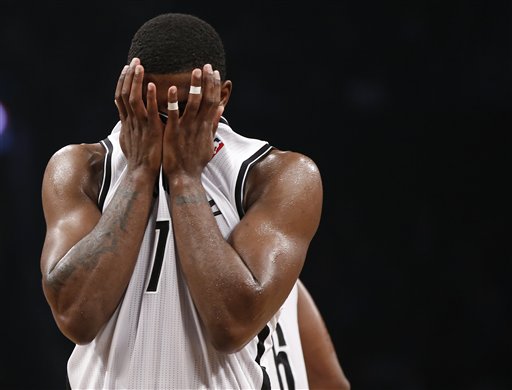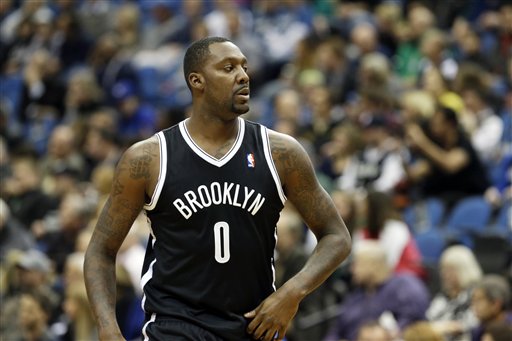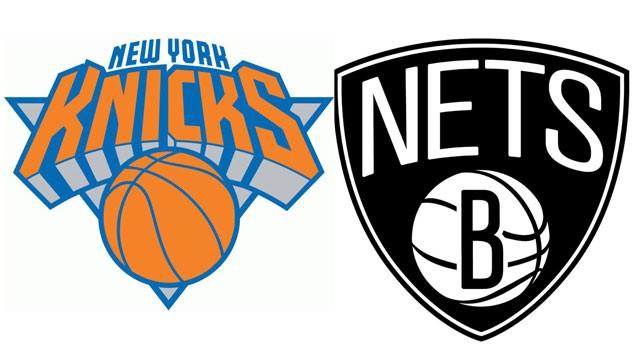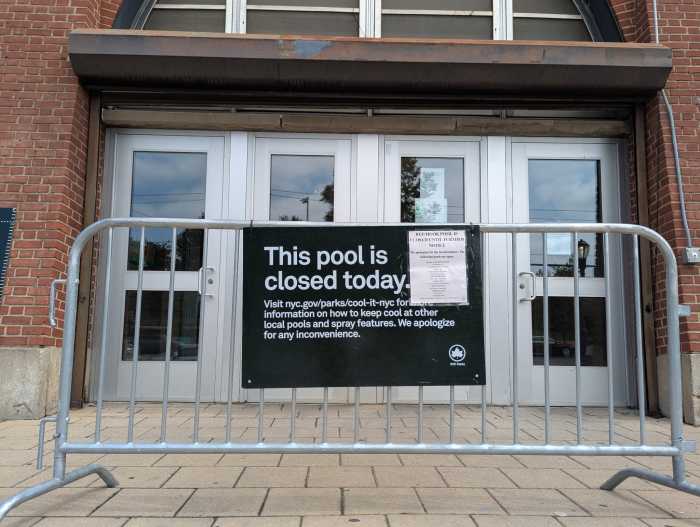Season stats:
56 G, 47 GS, 29.4 MPG, 12.6 PPG, 3.6 RPG, 2.3 APG, 0.9 SPG, 0.3 BPG, .465 eFG%, .502 TS%, 12.9 PER, 7.8% PIE
Preseason outlook:
Like most rookies, he’ll likely have an up-and-down season; some games he’ll score 20 points in ways that you can’t believe, and others he’ll look completely lost as the game happens around him. As the 25th pick in a generally weak draft (and make no mistake, he plays with a chip on his shoulder because of that), Brooks isn’t expected to destroy the league right out of the gate, but he’ll definitely have at least 10-15 minutes per game to make his mark.
Evaluation
Coming into the season, the knock on MarShon Brooks was that the Kobe expectations were far too lofty, and he’d be no more effective than a shoot-first offensive black hole like Nick Young. The former expectation is right on the money; Brooks is not Kobe by any standards. But Brooks proved the latter false often.
Marred by inconsistency, Brooks’ rookie season showed flashes of the all-around offensive force he could become, as well as the complete non-factor he might end up being. On his best nights, he’d take smart shots from the areas he succeeds in (notably the left wing), dish out of double-teams, fake opponents out of their shoes, chase down tapped-out offensive rebounds, and run the offense without disrupting its natural flow — when the offense had a natural flow, at least. He showed off an advanced post-up game, a high, arcing floater, and a jumper that he could uncork over mostly anyone. On his worst nights, he ranged from Jamal Crawford (taking unnecessary shots he doesn’t deserve) to completely invisible, standing around and hesitating to put himself in a position to score, let alone shoot.
As the season wore on, the wear on his body became evident; Brooks often settled for fadeaway shots even when open, relying more on his upper body and less on his worn-out legs. As David Thorpe noted, Brooks could do with watching Ray Allen, but not just for his ability to weave through screens; Allen is one of the best-conditioned players in the league, and it shows with each identical three-point shot. He’s mechanical. MarShon could use that militant training when he’s not creating his own buckets.
Defensively, MarShon exhibited what we expected in preseason — do as little as possible, and as much as necessary. Unfortunately, for Brooks “as much as necessary” meant “as much as necessary to stop collegiate-level opponents.” MarShon trailed opponents through screens, didn’t remain in a defensive stance off the ball, and gave up speed when faced in isolation. His length alone gives him the tools to be a turnover-creator, but it means little coupled with his lack of effort.
MarShon’s passing ability right out of the gate surprised me. He didn’t rack up assists immediately, but he showed a willingness to pass that his time in Providence wouldn’t prepare you for. After scoring 15 points in the first half against Boston early this season, the Celtics double-teamed Brooks early and often in the second. Rather than commandeer the offense and take bad shots to pad his numbers, Brooks gladly dished to open teammates for good looks. His first instinct is for team points, not individual points, and that makes a difference. But given the lineups he often played with, individual points were team points. He finished the season with a 14.6% assist percentage, a number comparable to former rookies Kerry Kittles, Andre Iguodala, Joe Johnson, and Jason Richardson. (Also, J.R. Smith. Yeesh.)
In the aggregate, MarShon had roughly the season I expected, but on a game-by-game basis, he either seemed to play well above my expectations or well below. At this point, I think he’s best suited as an off-the-bench scorer, someone who plays 20-25 minutes and keeps the second unit offensively afloat. But if he starts stringing together 20-5-5 games, I’ll gladly eat my words.
Final Grade:





















